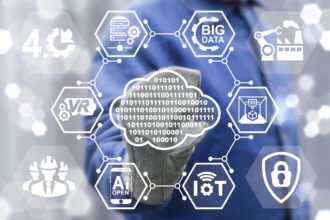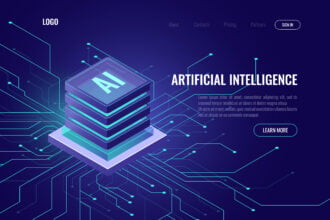As the Big Data movement gains momentum we’ll find more and more reasons to rethink how we actually create value out of data. Not just customer data, but operational data as well. Let’s look at a few predictions for 2012 and then I’ll try to make sense of what we’re seeing at Neural ID.
As the Big Data movement gains momentum we’ll find more and more reasons to rethink how we actually create value out of data. Not just customer data, but operational data as well. Let’s look at a few predictions for 2012 and then I’ll try to make sense of what we’re seeing at Neural ID. The future, as they say, is already here, we just have to know where to look for it.
Harlan Smith’s assessment of where Big Data is headed is quite insightful. In particular, he singles out the following industries:
- Supply chain, logistics, and manufacturing — With RFID sensors, handheld scanners, and on-board GPS vehicle and shipment tracking, logistics and manufacturing operations produce vast quantities of information offering significant insight into route optimization, cost savings and operational efficiency.
- Online services and web analytics — Internet companies invented Big Data specifically to handle processing information at Internet scale. Implementation of these analytical platforms is now viable for smaller online services companies to provide an edge over competitors for advertising, customer intelligence, capacity planning and more. Companies who don’t offer online services but do have an ecommerce or other online presence will benefit greatly from understanding customer behavior and buying patterns via clickstream, cohort analysis and other advanced analytics.
- Financial services — Financial markets generate immense quantities of stock market and banking transaction data that can help companies maximize trading opportunities or identify potentially fraudulent charges, among various other uses. New regulations also require detailed financial records to be maintained for longer periods.
- Energy and utilities — Smart instrumentation such as “smart grids” and electronic sensors attached to machinery, oil pipelines and equipment generate streams of incoming data that must be stored and analyzed quickly to uncover and fix potential problems before they result in costly or even disastrous failures.
- Media and telecommunications — Streaming media, smartphones, tablets, browsing behavior and text messages are captured at ever-increasing rates all over the world, representing a potential treasure trove of knowledge about user behavior and tastes.
- Health care and life sciences — Electronic medical records systems are some of the most data-intensive systems in the world and making sense of all this data to provide patient treatment options and analyze data for clinical studies can have a dramatic effect for both individual patients and public health management and policy.
- Retail and consumer products — Retailers can analyze vast quantities of sales transaction data to unearth patterns in user behavior and monitor brand awareness and sentiment with social networking data.
Of course, it’s right to look at the vertical applications of the technology. The enterprise is learning to “sense and respond” as Big Data takes it’s place at the business table. But there’s more. The folks at O’Reilly have put together a guide to the key issues in the Big Data universe:
Data issues — The opportunities and ambiguities of the data space are evident in this segment’s discussions around privacy, the implications of data-centric industries, and even in the debate about the phrase “data science” itself.
The application of data — An exploration of data applications showed that this segment is quickly expanding to include everything from data startups to established enterprises to media/journalism to education and research. A “data product” can emerge from virtually any domain.
Data science and data tools — The tools and technologies that drive data science are, of course, essential to this space, but the varied techniques being applied are also key to understanding the big data arena.
The business of data — This is all about the actions connected to data — the process of finding, organizing, and analyzing data that allows organizations of all sizes to improve and innovate.
What we’re focused on is the intersection of the business and the data – particularly unstructured data. Inductive Analytics is a key solution need for these emerging trends. The only way to deal with the key challenges of big data outlined above is by addressing data completeness, data reduction and intelligent value creation – addressing the analysis gap between the sensor and the user.
Here are some examples:
- Retail – the use of intelligent learning to improve compliance moniitoring, crowd data sourcing, loyalty and other key services enabled through inductive analytics.
- Food and Beverage – automated identification for CPG industries in demand-driven supply chain applications.
- Manufacturing – machine learning employed in trending, stability and quality assurance.
- Automotive – quality assurance on the assembly line.
- BioPharma – can’t say too much about what we’re doing here yet, but stay tuned!
What I’m saying is 2012 will bring us a stunning variety of cutting edge intelligent analytic applications across multiple industries. The future is already here.









